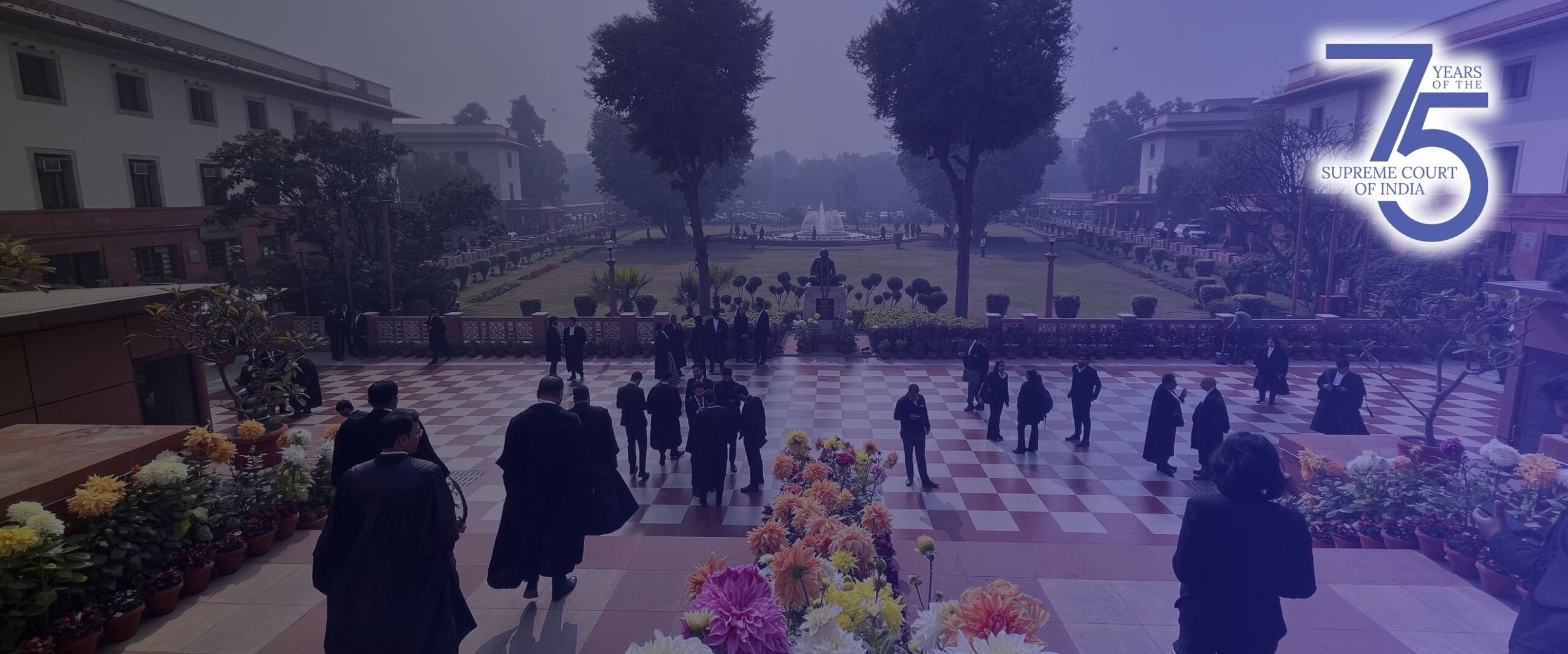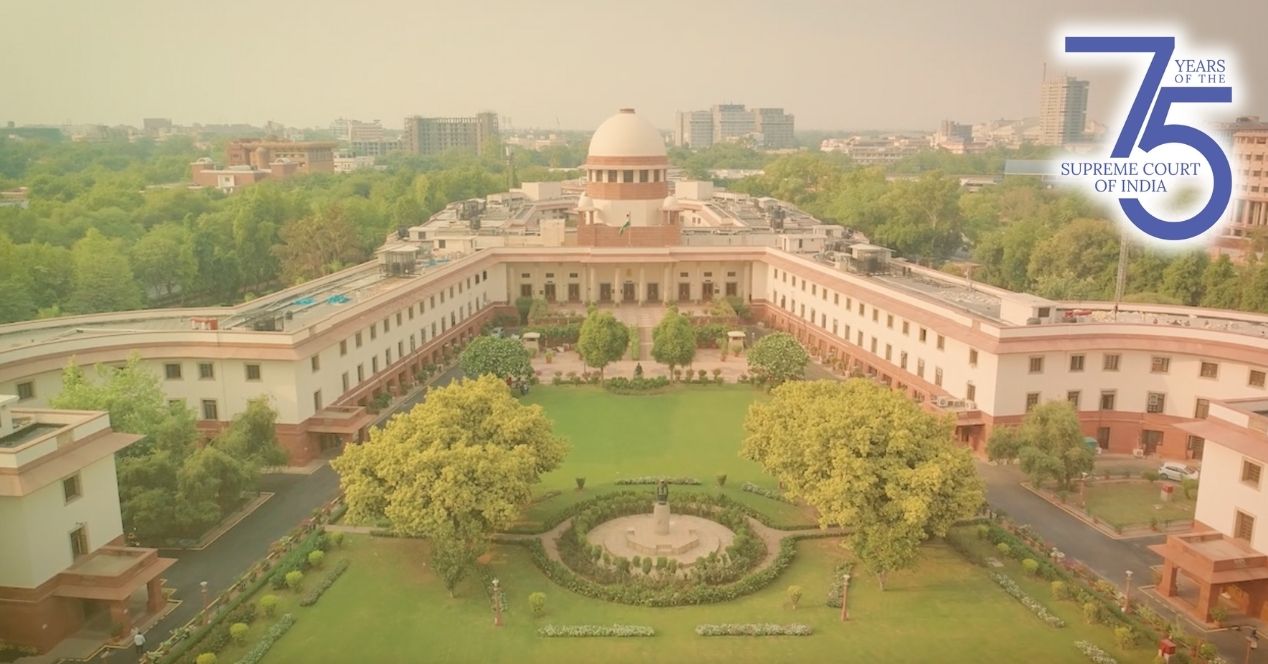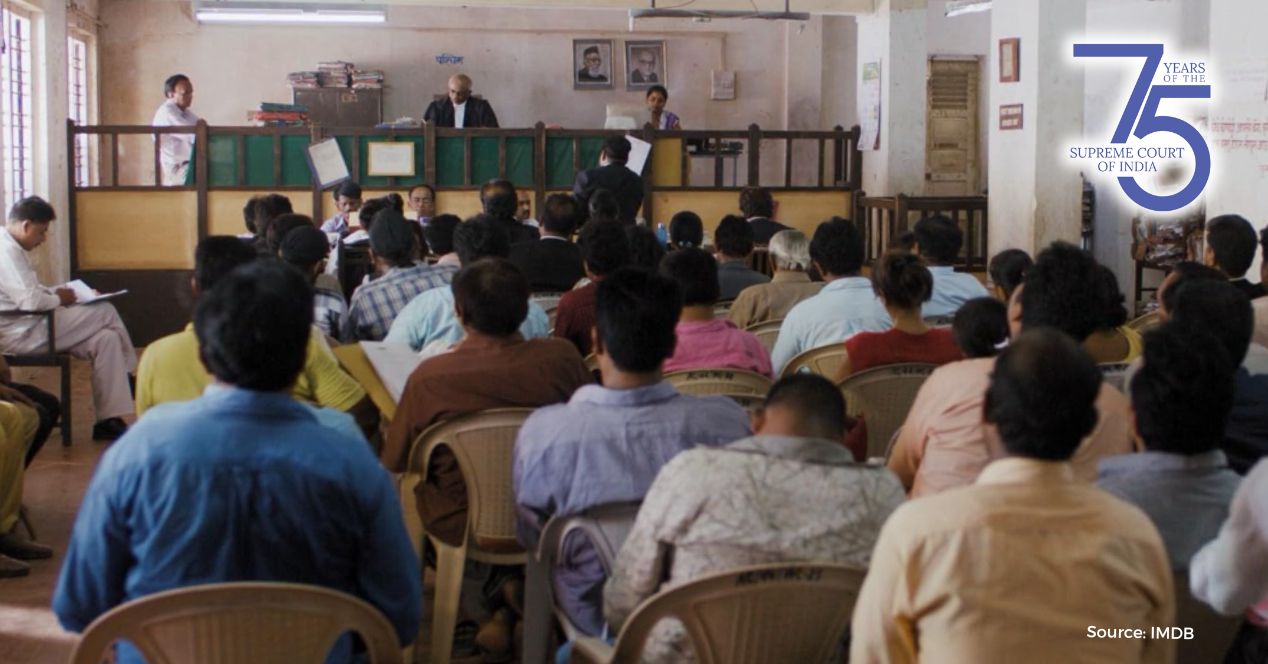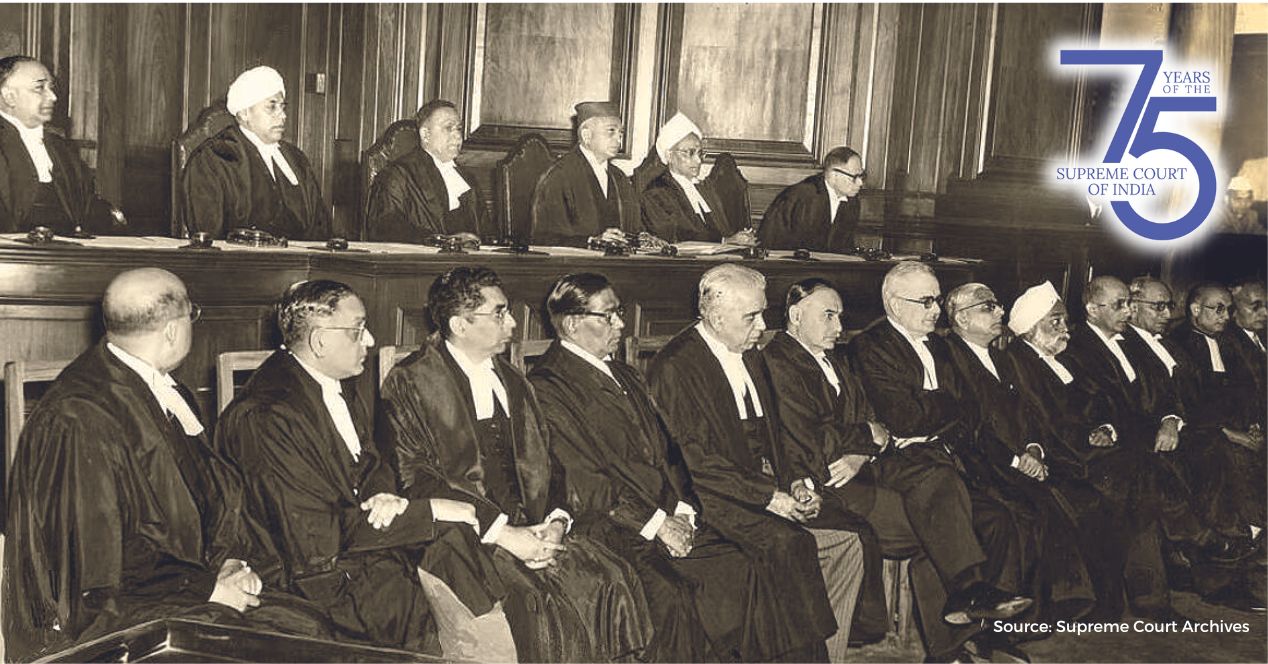What a Jagged Little PIL: The People’s Court at 75
The original promise of the PIL from the 1980s, based on social justice, has devolved into a confused and intimidating jurisprudence

In the mind of the average Indian citizen, the Supreme Court occupies a hallowed place. In the popular imagination, it is seen as the final arbiter and ultimate protector of legal rights. In large measure, the origins of this reputation can be traced to the creation, evolution and institutionalisation of public interest litigation (PIL) in the late 1970s and 1980s.
In its original form, PIL was conceived to allow marginalised individuals and groups access to the higher courts through proceedings brought by unaffected parties. The rules of standing were relaxed to effectuate this aim. However, as one tracks the developments over a half-century, it is clear that the original promise and purpose has soured. In this article, I trace the changing understanding of locus standi (simply stated, standing to sue), through the utterances and decisions of the Court in PIL matters. The result is a haphazard jurisprudence that has the effect of creating uncertainty in the mind of a bona fide seeker of public-oriented justice.
Under Article 32 of the Constitution, a writ may lie for a violation of fundamental rights before the Supreme Court. Before the High Courts, a writ may lie for a violation of fundamental or constitutional rights under Article 226. PILs effectively form a separate category within the larger area of the constitutional courts’ writ jurisdiction. Of its many distinguishing features, the relaxation of the rule of locus is perhaps the most prominent.
In 1976, Justice Krishna Iyer, in a matter concerning an industrial dispute observed that “public interest is promoted by a spacious construction of locus standi…and conceptual latitudinarianism permits taking liberties…to invoke the higher courts where the remedy is shared by a considerable number, particularly when they are weaker.” Three years later, came Hussainara Khatoon, where the rights of those held without trial were successfully agitated by an outsider to the injustice.
The most elaborate exposition of the merits of relaxing the rule of locus was seen in the 1981 case of S. P. Gupta v Union of India, also known as the Judges Transfer Case. In S. P. Gupta, individual lawyers challenged the constitutional validity of a circular on short-term judicial appointments. The argument on locus was that the legal injury, if any, was caused to the judges who were appointed on a short-term basis—it was these judges alone who could impugn the circular in question.
Justice Bhagwati referenced the peculiar milieu of “a country like India where access to justice being restricted by social and economic constraints… [made it] necessary to democratize judicial remedies, remove technical barriers…so that the large masses of people belonging to the deprived and exploited sections of humanity may be able to realise and enjoy the socio-economic rights granted to them…”
With a rhetorical flourish, he elevated the liberalisation of locus to a key ingredient in understanding “the true purpose of the judicial function”—a factor which invested the law itself with meaning and purpose, failing which it would remain “a paper parchment, a teasing illusion and a promise of unreality.” In S. P. Gupta, the High Courts were also encouraged to adopt this “proactive, goal-oriented approach.”
While the Supreme Court in S. P. Gupta sounded a word of caution, it was just that: a word of caution. In language as mellow as it is moderate, the Court records that one must be careful to see that the member of the public approaching the court is acting bona fide and not for personal gain, private profit, political motivation or “other oblique consideration”. Observing that fears of courts being flooded with litigation were unfounded, S. P. Gupta quotes K. E. Scott in Standing in the Supreme Court: A Functional Analysis to say: “The idle and whimsical plaintiff, a dilettante who litigates for a lark, is a specter which haunts the legal literature, not the court room.”
Through the 1980s and 1990s—during what has been described as ‘Phase I’ and ‘Phase II’ of public interest litigation—the strict enforcement of locus standi was done away with and was well-documented. In Phase I, petitions were focussed on the rights of the marginalised, Phase II dealt with environmental causes brought by individual petitioners (with M. C. Mehta being the most ubiquitous) or non-governmental organisations and citizens’ associations. The language of the Supreme Court was exuberant about one bringing a cause that affected many.
But a shift occurred around the turn of the century. The loosening of the rules of locus had led to slew of PILs in the 1990s, with the Supreme Court having to repeatedly observe that there was a distinction between a “genuine” petitioner and a “busybody”.
In the 2001 case of BALCO Employees’ Union v Union of India, the Court dealt with the proposed disinvestment of 51 percent shares by the Union Government in a public company in favour of Sterlite Industries Ltd. The case also involved the question of whether tribal land allotted to a public enterprise could be put into the hands of a private company. The Court held that disinvestment is a matter of policy, involving complex economic factors.
Amongst the various proceedings disposed of in BALCO, one was a PIL transferred from the Delhi High Court where a “persistent public interest litigant” had challenged the disinvestment. The Supreme Court observed that “there is, in recent years, a feeling which is not without any foundation that public interest litigation is now tending to become publicity interest litigation or private interest litigation and has a tendency to be counterproductive.”
Even while this was so, the Supreme Court contradicted its own ratio and entertained petitions in private interest, finding that there existed echoes of a larger public interest. This was the case in the 2004 decision of Indian Banks’ Association v Devkala Consultancy Services where the Court considered a challenge to the imposition of interest tax and held that “a private interest case can also be treated as a public interest case.”
Even passing observations of the Supreme Court (obiter dicta in legalese) constitute binding precedent under Article 141 of the Constitution. If private interest can also be a matter of public interest, it is understandable that parties can often perceive shadows of wider unresolved problems in individual grievances.
Having permitted this, the Supreme Court’s intemperate tone towards PILs in the 2000s was confusing, to say the least.
In 2006, the Supreme Court gave its judgement in Kushum Lata v Union of India. The matter was born out of a PIL filed by an unsuccessful bidder in a mining lease. PIL was described as “a weapon…to be used with great care and circumspection…to see that behind the beautiful veil of public interest an ugly private malice, vested interest and/or publicity seeking is not lurking.” If the Court were to find that the petition was “mischievous” and assailed “justifiable executive actions” it would have to “act ruthlessly while dealing with imposters and busy bodies or meddlesome interlopers impersonating as public-spirited holy men…. A person acting bona fide and having sufficient interest in the proceeding…will alone have locus standi…”
Similar echoes were seen in the 2007 case of Neetu v State of Punjab, where the Supreme Court found that no litigant has a right to “unlimited draught on the court time and public money…under this attractive name of public interest.”
It’s hard to say if it was the pressures of an overburdened system or a radical shift in jurisprudential perspective, but it was as if the dilettante had walked straight out of legal literature and was stalking the courtrooms.
While the invocation of PIL jurisdiction in certain cases was justifiably refused, the stridency of the Supreme Court’s language was striking. The rousing rhetoric of the meaning of the law and the true nature of the judicial function in S. P. Gupta gave way to language that was suspicious, belligerent and virtually looking to punish. Sweeping statements were made about the abuse and misuse of PILs. Bit by bit, the Supreme Court seemed to impose a higher standard of worthiness than would apply under an ordinary construction of the rule.
What was implicit in 2007 became explicit in State of Uttaranchal v Balwant Singh (2010). There, the Court was considering a challenge to the appointment of an Advocate General on the ground that he had attained the age of 62 years prior to appointment. The challenge was a poorly researched and utterly misconceived one, contrary to years of settled law. The Supreme Court did not rest at chastising the petitioner—it levied penal costs and laid down guidelines that it said were “imperative to streamline the PIL” and had to be followed by the High Courts.
The Balwant Singh guidelines require that courts “be fully satisfied that substantial public interest is involved” and mandate that petitions filed for extraneous and ulterior motives be discouraged by the imposition of exemplary costs or by adopting similar “novel methods.” It is curious to consider a levy of exemplary costs in a PIL when the Indian jurisprudence on costs is otherwise rudimentary at best.
But here’s another slip between cup and lip. Despite threats and lengthy guidelines, the weeding out of motivated PILs and the levy of costs has been far from the norm. The Supreme Court has entertained PILs that pertain to matters that are not in public interest and do not even pretend to demonstrate a violation of fundamental rights. This was certainly the case when, in a petition brought by a “public spirited person”, the Court passed an interim order directing cinema halls across the country to play the national anthem before every film. This was also the case when the Court issued notice in a PIL that sought directions for the Union to institute criminal proceedings against the Lawyers’ Collective (an NGO) for violation of various criminal statutes.
Even more jarring is the dissonance between the people to whom the Supreme Court lends its ear and to whom it directs its voice. In a matter concerning pollution in Delhi, the Court directed a stop to stubble burning seemingly without a substantive hearing for affected farmers. In matters concerning the situation of migrant workers during the pandemic, directions were first issued without scarcely hearing the workers themselves. Anuj Bhuwania’s Courting the People provides a litany of anecdotal evidence of how PIL jurisdiction was unleashed against the demographic it was created to save. Increasingly when one speaks of public interest litigation, the question that arises is: which public?
The Court has walked a long road away from a proactive approach to citizens’ rights. The “democratising of judicial remedies” that Bhagwati spoke of has not been realised. Through a series of shifts in the jurisprudence, a PIL petitioner is now required to inspire unshakeable confidence and open themselves up to public censure, and possibly even a monetary penalty. Meanwhile, a failure to uniformly apply its own guidelines means that the routinely litigious continue to use the PIL jurisdiction without backlash.
If 20 years counts as a generation, it seems like what we have witnessed since the 1980s is an old-fashioned generation gap between the Court and PIL. The Supreme Court at 30 seemed primed to deploy PIL as a tool for lasting change; the Court at 75 appears altogether unsure of that project.
Gulnar A. Mistry is a litigator practising at the Bombay High Court. She would like to thank Arti Raghavan and Akash Rebello for their inputs on this piece.




